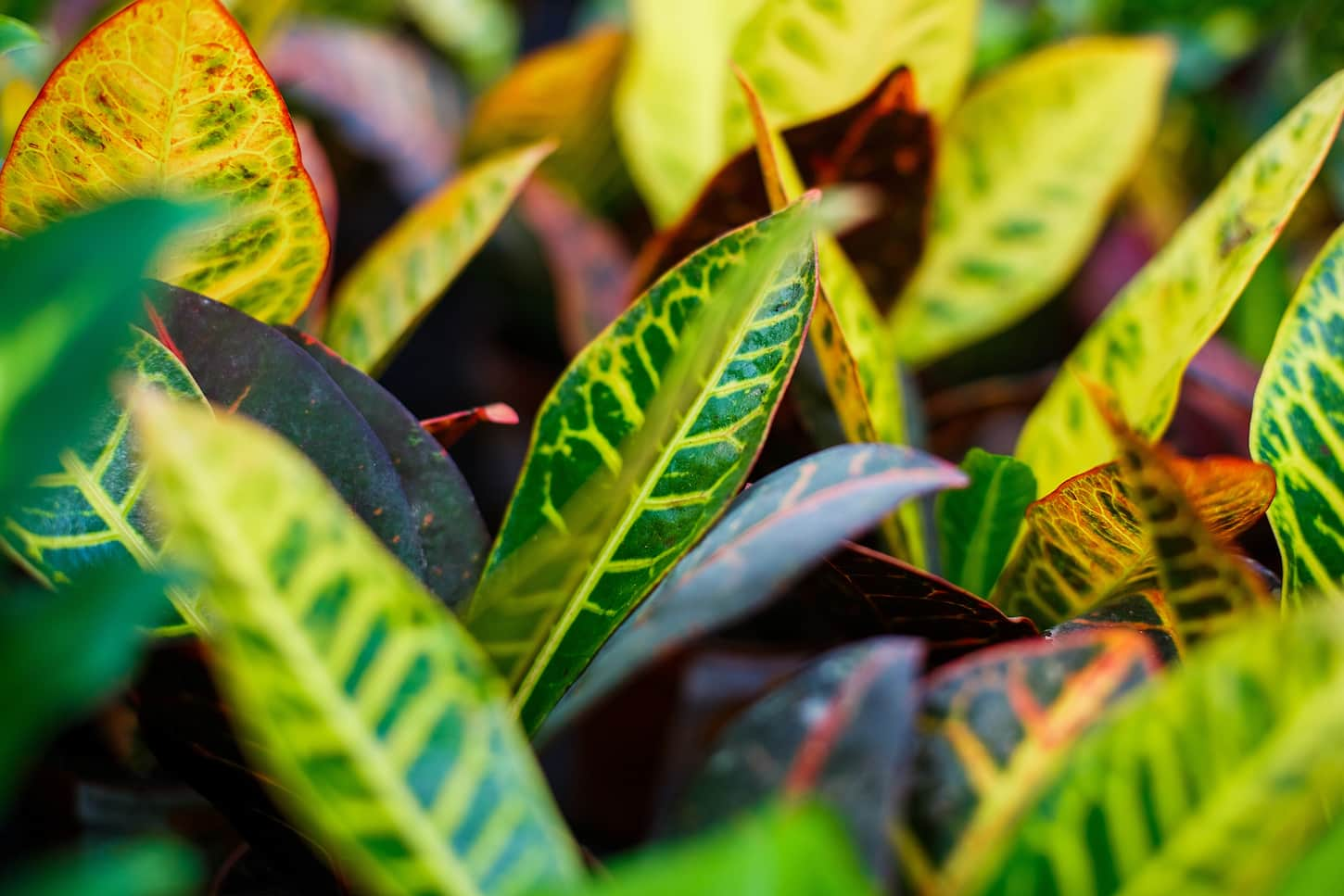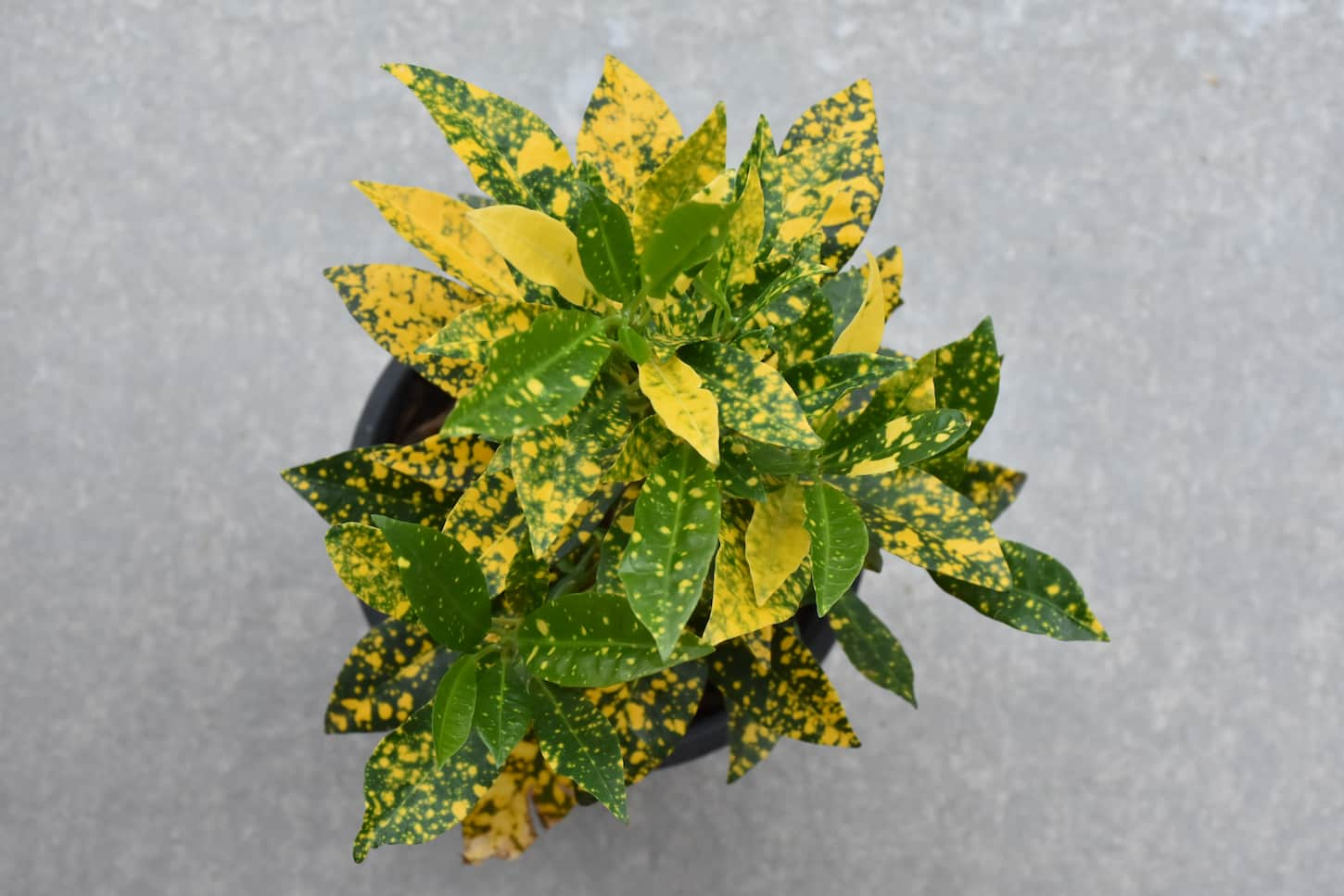There are very few plants that seem to radiate so much life and positive energy. Croton is maybe the best representative of the kind. Shiny, evergreen, large and thick leaves striped with green, yellow, orange, red, pink, or black will catch your attention instantly! They grow up to 3 yards or meters in their natural habitat. What you want is to go a step further – and experiment. Is it possible to grow croton in almost nothing but water?
Croton can grow in water due to its stem nature if it still gets the nutrients it needs from sunlight, hydroponics appropriate fertilizers, air, environment, and other sources. Hydroponics-grown croton can be vibrant, healthy, and beautiful additions to any home or garden.
Ready to read more about croton? They’re an amazing plant, so be sure to keep reading!

Quick (and cool) Croton Facts
Codiaeum Variegatum (of the spurge family, Euphorbiaceae) originates from southeastern Asia, Australia, New Zealand, and the Pacific islands. Although there are around 17 different sorts of croton, only the one with a diversity of colors may be grown to become a houseplant.
Bearing in mind the part of the world where it comes from, it is reasonable to assume that croton demands some (but not too much) warmth, light, a lot of water, and humidity to grow.
Hydroponics is cool, and so are crotons.
Here’s another cool fact: sometimes croton also refers to many broadleaf, annual weeds in the spurge family. Those weeds tend to be toxic to livestock, though it’s rarely eaten. We don’t want to grow that stuff, so don’t grow that. Instead, grow the pretty kind we actually mean.
But first, one more cool fact about croton.
Croton requires a good deal of humidity to thrive. Utah doesn’t have a good deal of natural humidity, so I struggle growing any croton. You can grow it next to other plants or in a greenhouse a whole lot easier than trying to keep it on its own.
How To Propagate Croton in Water?
Propagating new croton in water is not a quick process, so it requires a good deal of patience, waiting, and more patience. It can take several weeks to get a new plant from an existing one, and even longer for that plant to become strong.
When you grow croton in soil, you take an adult plant, cut a leaf or a stem (about 4 to 5 inches long), and plant it in soil. Even then, you need to make sure you get an axillary bud so that the plant propagates properly, without becoming a blind cutting. Thankfully, it is not that different if the habitat is water.
If you decide to cut stem, here is the process:
- First, cut a stem 4 to 5 inches long from an established plant, ideally including a piece of root and an axillary bud so you don’t end up with a blind cutting.
- Cut off all the leaves because you need all the water to empower the roots.
If you decide to take a leaf:
- Make sure that it is a healthy one.
- Cut it with its base (up to where it joins with the stem, as that will become the new roots).
- Know that you will not propagate true croton, as this will be a blind cut.
For a couple of days, leave the stem or leaf in a dark and dry place. This is to dry it out and hopefully prevent a whole host of issues.
Afterward, you take rainwater or simply clean water and immerse only an inch of the stem, or leaf base. This will help the new croton put down roots.
Here’s what you do next.
- Put the croton stem or leaf in a glass or jar of water. Make sure that the part where you made a cut/leaf base is under the water.
- Put a glass or jar in a sunny, warm place away from draught.
- You’ll see the first signs of roots in a few weeks.
- When the roots are a few inches long, plant them and grow them.
This is not a fast process, though, so remember to be patient.
If you’d rather not be patient while trying to propagate croton yourself, then go ahead and buy a croton start. It’ll be a whole lot faster to get a start and switch it to hydroponics than to grow your own croton start.
Seriously. Just go buy a croton start. It’s a ton easier.
Will A Croton Leaf Root in Water?
Croton leaves will grow roots in water, though they may not be able to propagate or bud into a proper croton plant. So while croton can grow from a leaf, it will be a blind cut unless the leaf cut also has a stem and an axillary bud.
Keep in mind, too, that growing a croton leaf is not an overnight process. Even these adventitious roots take time to grow.
At some point, you will have to decide if you want to continue to grow it in water, or if you want to put it in soil. However, since the croton leaf can’t ever turn into a proper plant, odds are that the leaf plant will just end up staying a blind cutting that doesn’t warrant getting planted.
In case you decide to plant the blind cutting, make sure to pull the plant out of the water, put it in a warm and dark place for its roots to dry, and then transition it into the soil. If you don’t do this, there is a possibility that the roots will rot as soon as they are in the soil.

How Does Croton Grow?
Croton, like other plants, grows day by day while using sunlight and the environment around it to get the nutrients it needs. Although it is easy to grow croton as a houseplant, it doesn’t come without its share of challenges.
Even when you find a good spot and the plant is progressing, there are issues with pests and watering. Do they need more water and what if their roots rot because of too much water?
It may happen out of the blue that croton loses all its leaves over the night, and then withers. It just can’t stand too high and too low temperatures. Even if it happens, give it time. Stabilize the circumstances needed for his growth, and after a couple of weeks, you may find new green leaves where there was no hope.
Even when it is grown inside, one needs to be careful about placing it close to the window. Yes, you should place it toward the southern side, but not close to the window glass if the temperature outside is under 10 degrees. You should also keep it in the company of other houseplants. Not only because it is a friendly plant, but because all plants’ water evaporates and creates a natural humidity that crotons enjoy.
If your croton doesn’t receive enough light, its colors will fade away, and leaves will become dark green. If this happens, move it to a brighter spot. And have in mind that new leaves, as they grow, grow green. It is with further development that they change their color to one that is specific to their species.
To be honest, keeping croton isn’t easy. They are rather stressful plants. They don’t deal well with changes, an arid natural environment, or cats who like plants.
Repotting them seems to require even more skills than making them survive winter. You shouldn’t do it unless it is absolutely necessary. And when you do need to do it, you do it with utmost care for the roots.

Key Takeaways
Crotons are amazing plants, and they can indeed grow in water.
You may keep it in the water container in a sunny and warm spot. All you need to do is to change its water on a regular basis to avoid algae growth. Usually, changing the water every three days or so is a good rule of thumb so that the container stays hydrated and free of algae and pests.
This way, you will keep all pests out in the open, and you will have a healthier plant that requires minimum water/humidifier/pebble requirements.
With enough fertilizers, fresh water, and sun, your croton will shine with splendor in all its colors. Having an opportunity to watch all the plant growth is a rather unique experience. You may grow it in water and soil with equal success.
And if you like to bring some new practices to your home gardening, growing croton in water may be an interesting challenge. How long can it grow in the water under perfect circumstances? Indefinitely!
The real trick is going to be keeping croton and a fern alive in hydroponics. So make sure you go read my article on keeping ferns alive in the water next: Can Ferns Grow In Water Only (Do They Grow In Water?) Because, seriously. It’s easier to keep the fern alive.
Resources
Learning from your own experience is essential, but learning from others is also intelligent. These are the sources used in this article and our research to be more informed as homesteaders.
- “Can You Grow a Croton From a Single Leaf?” Laidback Gardener, 26 Dec. 2019, laidbackgardener.blog/2019/12/27/can-you-grow-a-croton-from-a-single-leaf.
- “Croton.” University of Arkansas System Division of Agriculture, www.uaex.uada.edu/farm-ranch/resource-library/forages-id-database/croton.aspx. Accessed 19 Jan. 2022.
- “Croton (Plant).” Wikipedia, 26 Nov. 2021, en.wikipedia.org/wiki/Croton_(plant).
